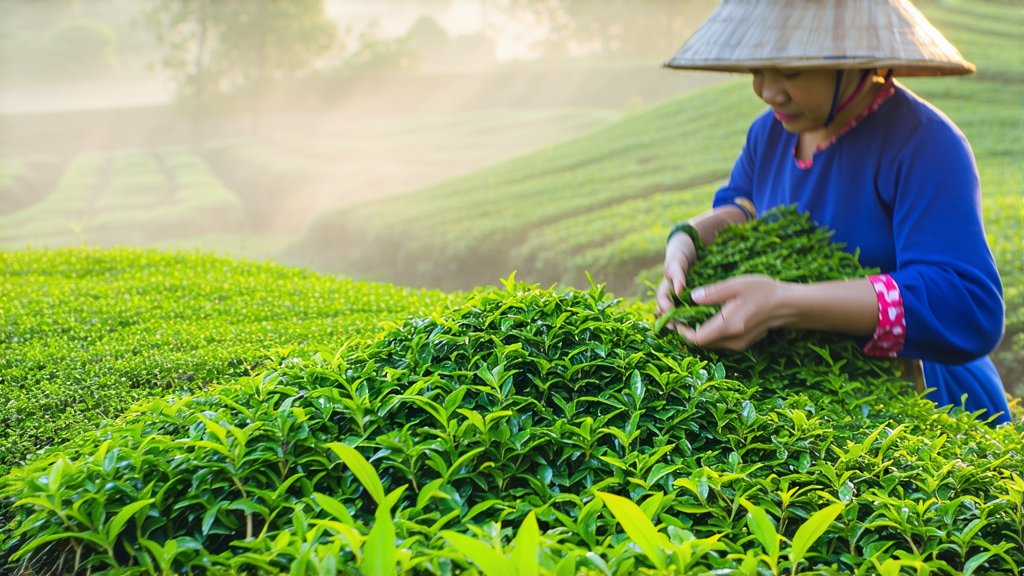
In the verdant landscapes of China's Zhejiang Province, nestled between rolling hills and serene lakes, lies the birthplace of one of the world's most revered green teas—Longjing, affectionately known as Dragon Well tea. This exquisite beverage, with its emerald hue and chestnut-like aroma, has captivated tea enthusiasts for centuries and continues to be a symbol of Chinese tea culture's elegance and refinement.
A Glimpse into History
The origins of Longjing tea trace back to the Tang Dynasty (618-907 AD), but it wasn't until the Qing Dynasty (1644-1912) that its production methods were refined, earning it imperial favor and widespread acclaim. Legend has it that the tea was named "Dragon Well" after a well located near the West Lake in Hangzhou, where, according to folklore, a dragon resided. The well's water, said to be exceptionally pure, contributed to the unique taste of this tea, solidifying its prestigious reputation.
Varieties & Characteristics
Longjing tea is primarily grown in two main regions: West Lake (Xihu) Dragon Well and beyond the lake in places like Yuhang and Shaoxing. The West Lake variety, considered the finest, is characterized by its flat shape resembling a spearhead, vibrant green color, and a delicate fragrance reminiscent of roasted chestnuts or fresh vegetables. These attributes are a result of meticulous cultivation practices and adherence to traditional processing techniques.
The Art of Crafting Longjing
The journey from leaf to cup for Longjing tea involves several intricate steps:
-
Plucking: Only the youngest shoots, typically consisting of one bud and one or two leaves, are handpicked during the early spring harvest. This ensures optimal tenderness and richness in flavor.
-
Withering: Freshly picked leaves undergo a gentle withering process to reduce moisture content and prepare them for pan-frying.
-
Pan-Frying: This is where the magic happens. Skilled artisans stir-fry the leaves in large iron woks over high heat, constantly tossing them to prevent burning while simultaneously removing excess moisture and shaping the leaves into their distinctive flat form. This step not only halts oxidation but also imparts a unique toasty aroma.
-
Shaping: After initial frying, the leaves are further shaped by hand or using specialized machines to achieve the desired flat appearance.
-
Final Frying: A second round of frying polishes the leaves, enhancing their shine and finalizing their flavor profile.
-
Sorting & Grading: Once dried, the tea is meticulously sorted based on quality, size, and shape. Only the best leaves make it into premium grades.
Savoring the Essence of Longjing
To truly appreciate Longjing tea, one must engage all senses in the tasting experience:
-
Visual Appeal: Observe the dry leaves, noting their uniformity and vibrant green color. Upon brewing, watch as they unfurl gracefully, revealing their full beauty.
-
Aroma: Inhale deeply before sipping to detect the subtle scent of fresh chestnuts or sweet corn, a hallmark of Longjing tea.
-
Flavor: Take a slow sip, allowing the tea to coat your palate. Note the initial umami notes followed by a sweet aftertaste, with a hint of vegetal complexity.
-
Texture: Feel the silky smoothness of the liquid as it glides across your tongue, leaving a refreshing cleanliness in its wake.
-
Aftertaste: Pay attention to the lingering flavors and aromas after swallowing, which should be long-lasting and pleasantly nuanced.
Conclusion
Longjing tea is more than just a beverage; it embodies the harmony between nature and human craftsmanship, a testament to centuries of tradition and dedication. Its history, varieties, meticulous production process, and unique sensory experiences make it a treasure worth exploring for any tea connoisseur or curious newcomer alike. As you embark on your own journey through the enchanting world of Longjing, immerse yourself fully, savoring each moment and every sip, for in doing so, you partake in a timeless ritual that transcends borders and connects us all to the essence of nature's bounty.